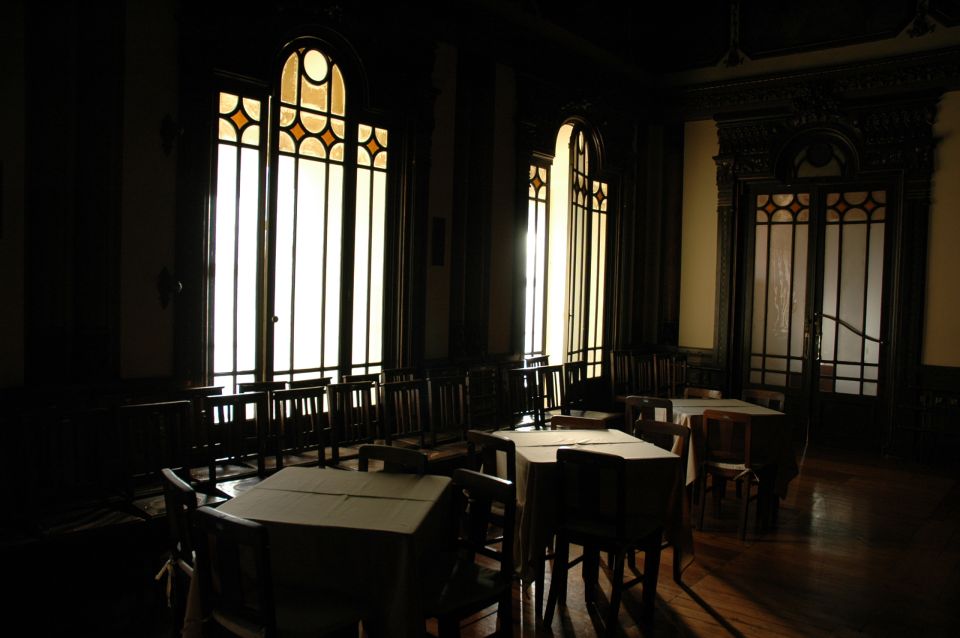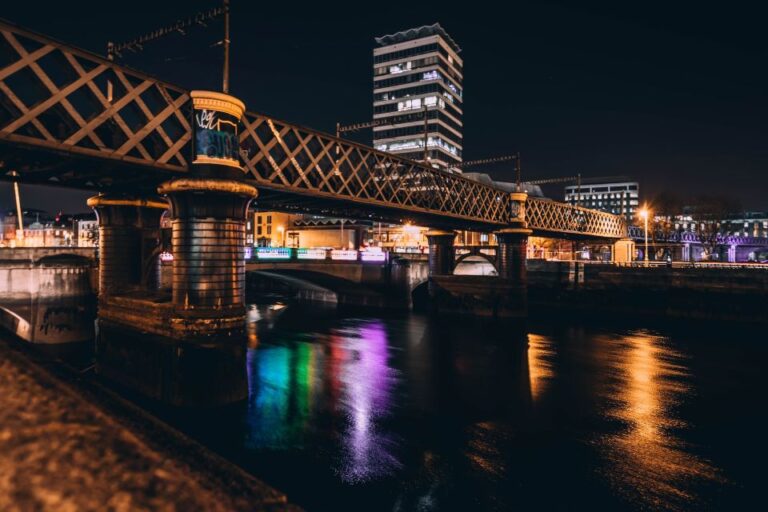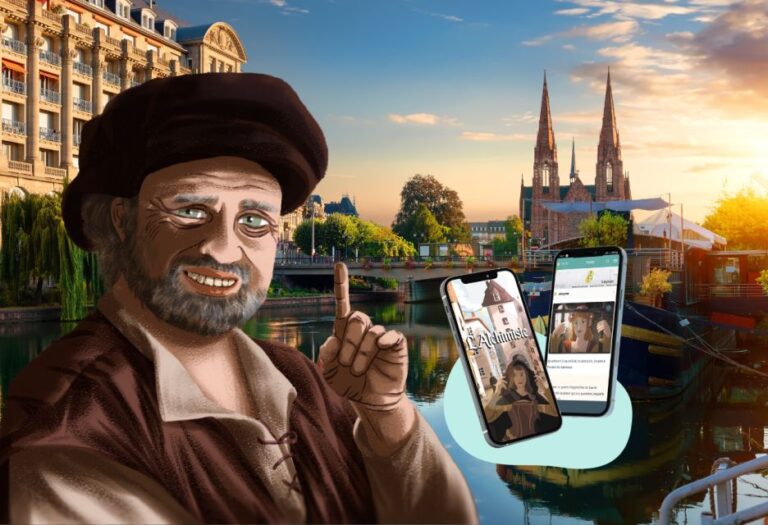Lisbon’s wartime espionage landscape is a captivating tapestry of intrigue, where shadowy alleyways and clandestine meeting spots tell tales of double agents, refugees, and profiteers navigating a web of deception. This guided walking tour invites you to uncover the city’s hidden history, delving into the legacy of legendary spies like Garbo and the intricate networks that funneled Nazi gold into neutral Portugal. As you explore Lisbon’s pivotal role in shaping the course of the war, you’ll be swept up in a world of royals in exile, Salazar’s dictatorship, and the city’s essential escape routes. Prepare to be immersed in a story that could have been plucked straight from the pages of a James Bond novel.
Key Points

- Trace the steps of legendary double agent Juan Pujol García, codenamed Garbo, who masterfully played both the Nazis and the Allies.
- Explore the clandestine routes used to funnel Nazi gold into the neutral haven of Portugal, uncovering tales of spies and profiteers.
- Visit the opulent Hotel Avenida Palace, a haven for displaced royals and fleeing refugees during the war.
- Discover the shadowy escape routes through Lisbon’s winding cobblestone streets, used by refugees and dissidents seeking sanctuary.
- Uncover the city’s legacy as a crucible of espionage, which inspired the iconic adventures of James Bond.
Lisbon’s Wartime Espionage Landscape

During World War II, Lisbon became a hotbed of wartime espionage, as double agents, refugees, and profiteers navigated the city’s streets and alleyways in a high-stakes game of deception and intrigue.
The scent of freshly brewed coffee and the chatter of hushed conversations filled the air, masking the covert activities that unfolded beneath the surface.
Alleys echoed with the footsteps of those in pursuit, while hidden doorways concealed the comings and goings of those seeking safe passage.
The city’s neutrality provided a unique vantage point, drawing a cast of colorful characters who wove a complex tapestry of subterfuge, betrayal, and daring escapes.
Lisbon’s wartime landscape was a thrilling stage upon which the drama of espionage played out.
Uncovering the Garbo Story

Amidst the intrigue of Lisbon’s wartime espionage, one story stands out – that of the legendary double agent known as Garbo. This enigmatic figure, whose real name was Juan Pujol García, spun a web of deception that would captivate the world and forever shape the course of World War II.
- How he masterfully played both the Nazis and the Allies, feeding each side false information
- The ingenious way he built an entire network of fictional spies to bolster his credibility
The pivotal role he played in the D-Day landings, convincing the Germans that the invasion would happen elsewhere.
The daring escape he orchestrated, fleeing Spain and ultimately settling in England.
The lasting legacy of Garbo, a true master of espionage whose story continues to captivate and inspire.
Tracking Nazi Gold in Portugal

Weaving a tapestry of intrigue and deception, the story of Nazi gold in Portugal unravels a complex web of profiteers, refugees, and clandestine operations that transformed Lisbon into a hub of wartime espionage.
On this tour, you’ll explore the shadowy realm where third-reich plunder intersected with Portuguese neutrality. Trace the covert routes that funneled Nazi wealth into this neutral haven, uncovering tales of cunning spies, gold-laden suitcases, and double-dealing intermediaries.
Glimpse the high-stakes drama that played out in Lisbon’s cafes and backrooms as fugitives, diplomats, and opportunists navigated a treacherous landscape. Uncover the legacy of this illicit wealth and its enduring impact on the city’s history – a captivating chapter in Lisbon’s evolution as the ‘City of Spies.’
Royals and Refugees in Exile
Why, as Europe descended into war, did Lisbon become a haven for displaced royals and fleeing refugees? On this captivating tour, you’ll uncover the extraordinary stories of exiled monarchs and desperate escapees who found solace – and sometimes peril – in the city’s shadowy corners.
The lavish Hotel Avenida Palace, where Belgian and Dutch royals sought refuge from the Nazis.
The Estoril coast, nicknamed the ‘Riviera of Portugal,’ where wealthy aristocrats and celebrities mingled.
The Jerónimos Monastery, a quiet sanctuary for Spanish Republicans escaping Franco’s regime.
The docks, bustling with clandestine activity as refugees sought passage to the Americas.
Salazar’s Estado Novo regime, which both welcomed and monitored these high-profile exiles.
As you stroll the atmospheric streets, you’ll discover:
Salazar’s Dictatorship and Neutrality
As Lisbon sheltered royals and refugees, it also found itself at the heart of another complex web – that of the authoritarian regime led by António de Oliveira Salazar, whose Estado Novo dictatorship both welcomed and closely monitored the high-profile exiles seeking sanctuary in the city. While Salazar’s Portugal officially maintained neutrality during the war, his regime shrewdly leveraged its strategic location and turned a blind eye to the underground networks of spies, smugglers, and profiteers who thrived in the city’s shadows. This precarious balancing act is perhaps best exemplified by the infamous case of the "Nazi Gold Train," a shadowy tale of greed, deception, and the uncomfortable complicity of Portugal’s authoritarian government.
| Salazar’s Dictatorship | Neutrality |
|---|---|
| Estado Novo | Maintained Officially |
| Authoritarian Regime | Blind Eye to Underworld |
| Welcomed Exiles | Strategic Location |
| Closely Monitored | Nazi Gold Train |
Exploring Lisbon’s Escape Routes
Amidst the labyrinth of Lisbon’s winding cobblestone streets, a network of clandestine escape routes offered a lifeline for those fleeing the perils of war.
These shadowy corridors, known only to a select few, snaked through the city, providing harrowing yet vital passage to safety. Refugees, dissidents, and those marked for capture would navigate a treacherous journey, evading detection at every turn.
Secret alleyways leading to hidden docks.
Safehouses disguised as innocuous businesses.
Coded signals exchanged between trusted allies.
Nighttime boat rides across the Tagus River.
Forged documents procured through shadowy contacts.
This underground railroad of hope and desperation bore witness to many a daring escape, the city of Lisbon serving as both sanctuary and springboard to a new life beyond.
Insights Into James Bond Inspirations
Lisbon’s rich history as a haven for wartime spies and intrigue has long captivated the imaginations of storytellers, none more so than the legendary James Bond creator Ian Fleming.
Delving into the city’s shadowy past, one can uncover the very inspirations that fueled the iconic superspy’s globe-trotting adventures. From the opulent hotels that hosted exiled royals to the shadowy alleyways where desperate refugees sought escape, the essence of mid-20th century Lisbon permeates the pages of Fleming’s thrilling narratives.
Whispers of double agents, Nazi gold, and daring covert operations all coalesce to form the deliciously sinister backdrop against which Bond’s exploits unfold. Truly, Lisbon’s legacy as a crucible of espionage has left an indelible mark on the world’s most famous fictional spy.
The City’s Spy Network Revealed

Beneath Lisbon’s sun-drenched plazas and charming cobbled streets, a clandestine web of spies, double agents, and shadowy informants quietly wove a tapestry of intrigue that would captivate the world.
This guided walking tour unveils the city’s storied spy network, taking you on a tantalizing journey through:
- Covert meeting spots where operatives exchanged secrets under the cover of darkness
- Discreet safehouses that sheltered refugees and defectors fleeing the chaos of war
- Labyrinthine alleyways that concealed ingenious escape routes for those evading capture
Opulent palaces where royals in exile hobnobbed with intelligence agents and profiteers.
Nondescript cafés where deals were struck and betrayals hatched over steaming cups of coffee.
Recap
Lisbon’s wartime espionage landscape is a rich tapestry waiting to be unraveled.
From the shadowy alleyways to the clandestine meeting spots, the city’s hidden history comes alive, revealing a tangled web of intrigue, double agents, and the flow of Nazi gold.
This immersive tour offers a delectable taste of the city’s pivotal role in shaping the course of World War II.






